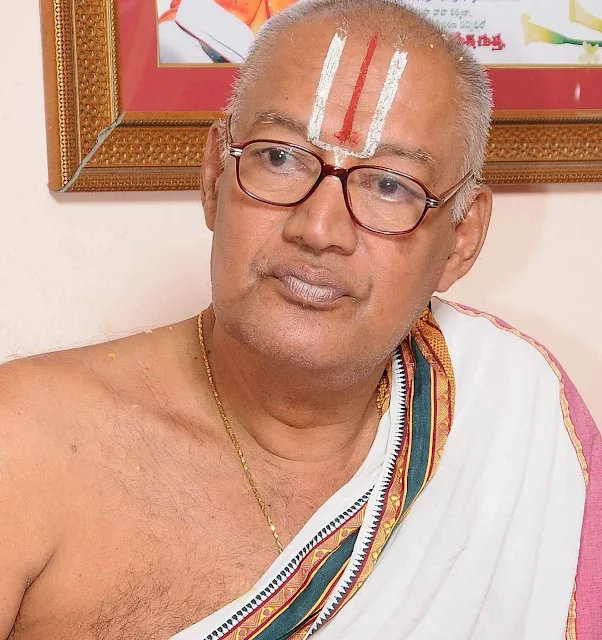Harivarasanam also known as Hariharasuthāshtakam, is a Sanskrit Hindu devotional song composed in the astakam metre, recited at Sabarimala (the principal Ayyappan pilgrimage site), before closing the temple door every night. The song was written by Kambangudi Kulathur Srinivasa Iyer and Swami Vimochanananda sang it for the first time at Sabarimala. Though there have been many versions of this song sung by many renowned vocalists like P. Unni Krishnan, the Sabarimala temple plays the rendition by K. J. Yesudas of a musical version composed by the renowned music director G. Devarajan every evening after the final pooja.
'Harivarasanam' is a Sanskrit devotional song written in eight stanzas, called 'Ashtakam'. It was written by Kambakudi Kulathur Srinivasa Iyer, a guruswami, in 1947. Iyer sang this song many times after Athazha Pooja, just before closing the temple doors. But, it became a sleeping song just some years later, with the help of V. Eeswaran Namboothiri, the then head priest (Melsanthi), who sang this song on the re-consecration day in 1951.
Sabarimala is located in the deep jungle area, and in the past a few pious devotees managed the difficult pilgrimage. The temple opens during the pilgrimage season (November to January) and also on the first day of every Malayalam Era. VR Gopala Menon, from Alapuzha used to accompany Thirumeni Eashwaran Namboothiri, the Melshanthi (head priest), to Sannidhanam every time, and would stay there by himself even when the temple was closed, remaining undisturbed by the wild animals. Later, when Devaswom Board was formed, it is believed that he was asked to move out. He eventually died at a tea estate at Vandiperiyar.
Gopala Menon used to recite "Harivarasanam" with devotion during his time at Sannidhanam, and when Thirumeni Eashwaran Namboothiri heard about the passing away of the Mr. Menon, he was deeply saddened. At the end of the day's rituals, the Namboothiri was about to close the doors of the Sannidhanam when he remembered the dedication and sacrifice of the Gopala Menon and he then began to recite "Harivarasanam"' starting a nostalgic tradition that remains unbroken till date.
Today, as the final verses are being sung, all the assistant Santhis (priests) leave the Sreekovil one by one. As the song ends, only the Melsanthi is inside. He extinguishes the lamps one at a time and closes the doors for the night.
-----------------------------------------------------------------------------------------------------------------------
Kattassery Joseph Yesudas (born January 10,1940) is an Indian Carnatic musician and filmi playback singer.
Yesudas sings Indian classical, devotional and cinematic songs . He has recorded more than 40,000 songs in many languages including Malayalam, Tamil, Hindi, Kannada, Telugu, Bengali, Gujarati, Oriya, Marathi, Punjabi, Sanskrit, Tulu, Malay, Russian, Arabic, Latin and English during a career spanning more than five decades. He has performed in most Indian languages except Assamese, Konkani and Kashmiri. He also composed a number of Malayalam film songs in the 1970s and 1980s. Yesudas is fondly called Gana Gandharvan (The Celestial Singer).
Yesudas has won the National Award for the Best Male Playback Singer seven times (the most by any Indian singer), 5 Filmfare Awards and the State Award for the Best Playback Singer 43 times, which consists of awards by the state governments of Kerala, Tamil Nadu, Andhra Pradesh, Karnataka, and West Bengal. He was awarded the Padma Shri in 1975 and the Padma Bhushan in 2002 by the Government of India for his contributions towards the arts. In 2011 Yesudas was honoured with the CNN-IBN outstanding achievement award having recorded over 20,000 songs in a five-decade career. In 2006, he sang 16 film songs in four South Indian languages on the same day at AVM Studio, Chennai.







